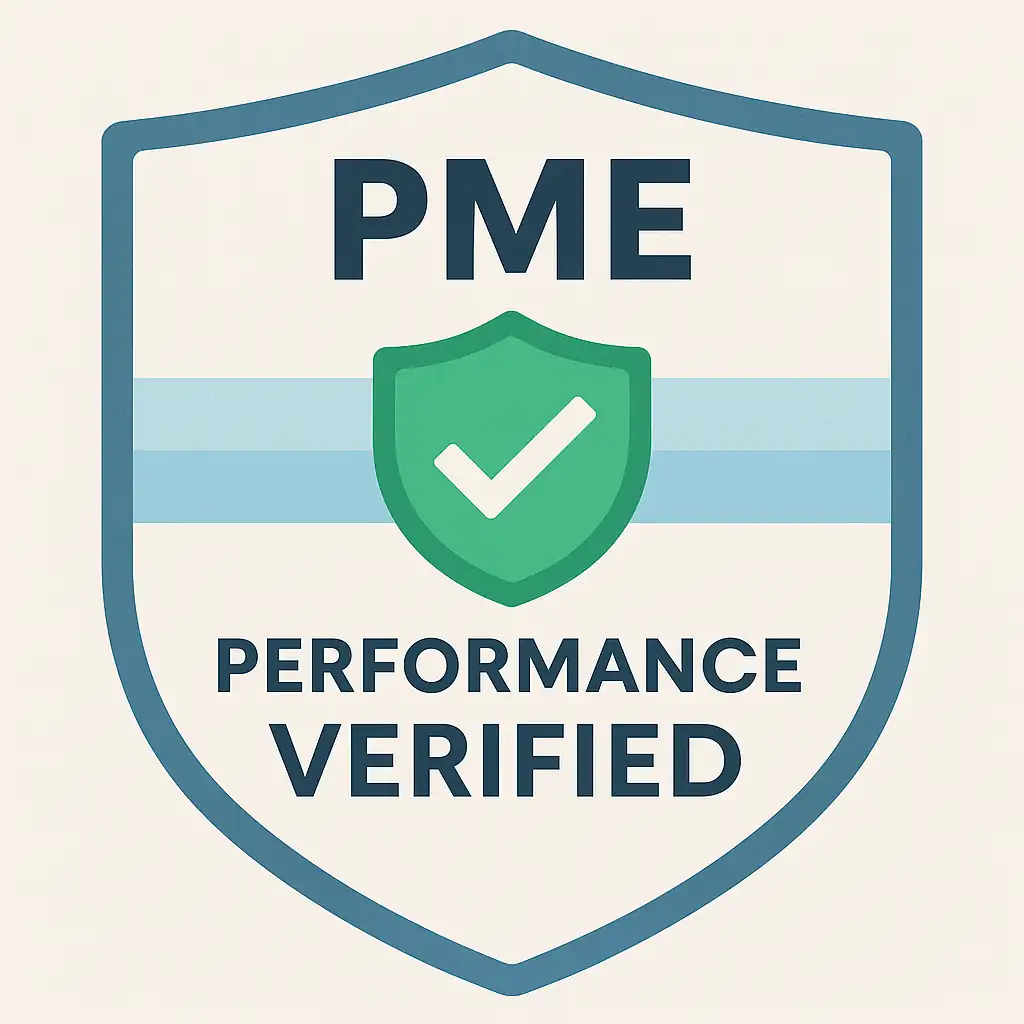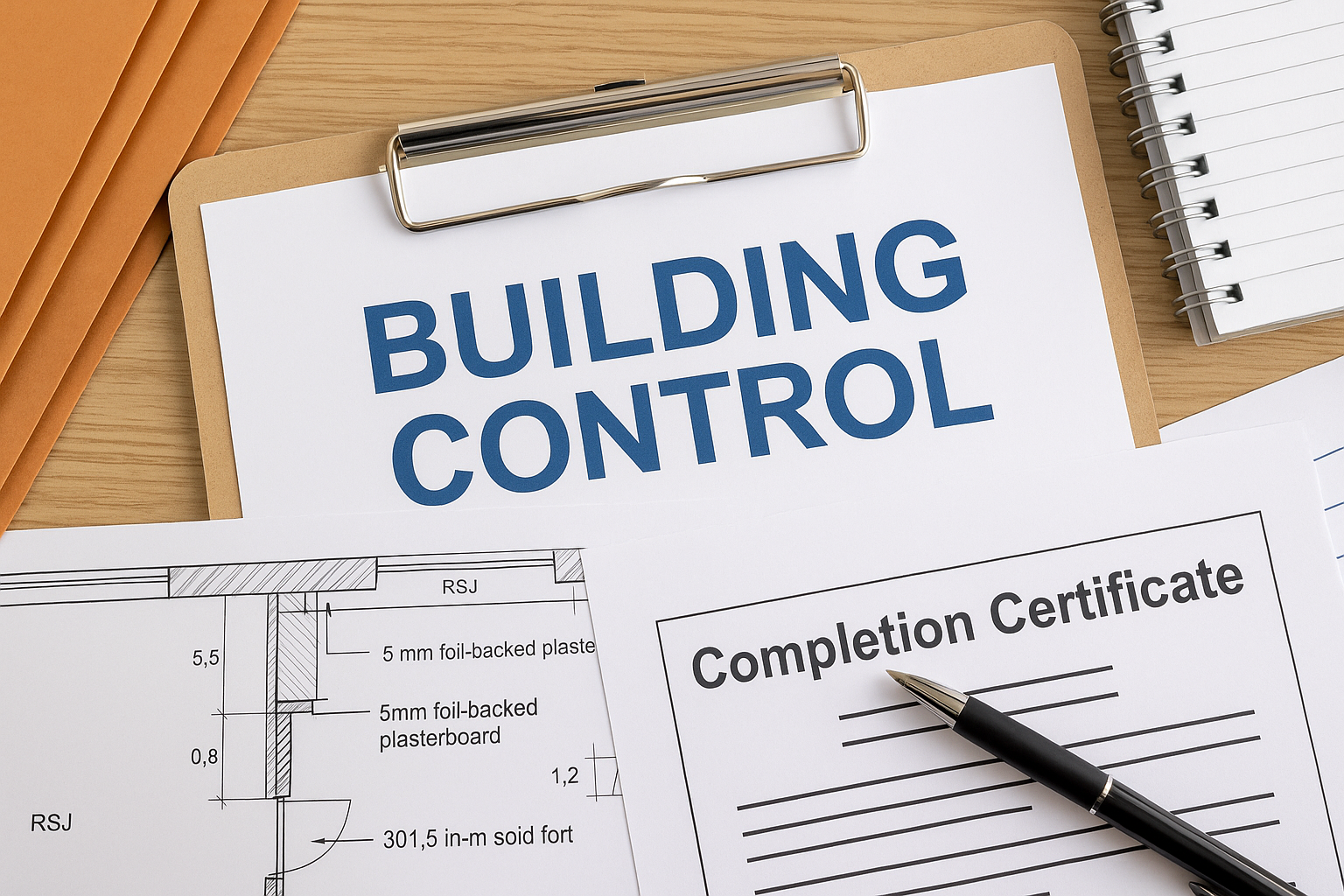Share this post:
Building Control keeps your project safe, compliant and resale-ready. Learn the approval routes (Full Plans vs Building Notice), typical council “quirks,” required certificates, inspection stages, costs, and how to avoid delays — with practical tips for extensions, garage conversions, lofts and structural work.
Need clarity on Building Control for your project?
We prepare compliant drawings and guide you through inspections — from first sketch to Completion Certificate.
Summary
Building Control makes sure your build is structurally sound, energy-efficient, fire-safe and healthy to live in. Whether you’re doing an extension, garage conversion, loft or replacing structural elements, you’ll generally need Building Regulations approval — separate from planning permission. Pick the right approval route, keep a tidy evidence trail, and book the right inspections at the right time to secure a Completion Certificate with no drama.
What is Building Control?
Building Control is the compliance framework behind UK building work. It ensures that your project meets the Building Regulations — covering structure, fire safety, insulation, ventilation, drainage, accessibility and more. You’ll work either with your Local Authority Building Control (LABC) team or a Registered Building Control Approver (formerly Approved Inspector).
Note: Planning permission and Building Control are different systems. Planning looks at how a project affects neighbours and the street; Building Control checks that it’s safe and built correctly. Many projects need both.
For national guidance, see the Planning Portal and GOV.UK.
Routes to approval: Full Plans vs Building Notice
Full Plans (best for certainty)
With Full Plans, you submit detailed drawings, structural calculations and specifications up front. Building Control checks and issues a conditional approval before you start (subject to inspections). This reduces on-site surprises and is the safer route for extensions, lofts, structural steel (RSJs), chimney removals and any work with fire safety complexity.
Building Notice (for simple, low-risk jobs)
A Building Notice skips the detailed plan check and relies on inspections during the build. It’s faster to submit but puts more risk on the builder: if something doesn’t comply, you’ll need to fix it on site. Use with care for smaller, straightforward works handled by experienced contractors.
Tip: If you’re unsure, choose Full Plans. It front-loads the checks, which means fewer delays later when trades are on site.
Local council “quirks” to watch
While the Building Regulations are national, local practice can vary. Some councils request extra documentation or have preferred details that speed approvals. Common examples we see across areas like Buckinghamshire, Milton Keynes, and Guildford include:
- Thermal details: Officers may ask for manufacturer datasheets and U-value calculations to evidence insulation performance at junctions.
- Ventilation proof: Expect requests for MEV/MVHR specs, trickle vent sizes, and air-tightness approach, especially on deep retrofits and lofts.
- Drainage sketches: Some teams want a simple plan showing existing/private runs, connection points, invert levels and soakaway testing (BRE365).
- Fire separation details: For loft conversions and two-storey extensions, councils often want door ratings, protected routes, and smoke/heat detection layouts clearly shown.
- Structure evidence: Chimney removals and steel beams commonly trigger requests for calc packs and padstone details.
Important: Parking and highways are planning matters, but they often influence garage conversions. If your council enforces on-plot parking standards, resolve that early or Building Control sign-off can be slowed by planning conditions.
Common projects & what Building Control checks
Extensions
- Structure: Foundations (depth/ground type), steels, masonry, lateral restraint, roof timbers.
- Thermal: U-values for walls/roof/floor, cold-bridge control at openings, airtightness strategy.
- Fire: Escape windows where needed, cavity barriers, separation to boundary, detectors.
- Drainage: Foul/storm connections, gullies, soakaways, backflow prevention if applicable.
Garage conversions
- Floor upgrade: Damp proofing, insulation, and thermal break at thresholds.
- External wall: Rebuilding or upgrading garage door opening to an insulated wall with DPC continuity.
- Ventilation: Background/trickle, intermittent or continuous extract as required.
- Fire separation: If adjacent to kitchen/escape routes or boundary conditions apply.
Loft conversions
- Structure: New floor joists, trimming, purlin support, dormer framing, rafter upgrades.
- Fire safety: Protected stair route, fire doors (or alternative strategy), interlinked alarms.
- Thermal & ventilation: Insulation build-ups, condensation risk, purge ventilation & trickle vents.
Structural alterations (RSJs, chimney removal)
- Calcs & details: Engineer’s calculations, bearing lengths, padstones, connection plates.
- Temporary works: Safe propping sequence during the works.
Tip: Add a one-page Site Compliance Folder index to your drawings package. Officers love tidy evidence, and it shortens queries.
Related guides for context:
Documents & certificates you’ll need
- Drawings pack: Plans, elevations, sections, details; specifications.
- Structural package: Engineer calcs, connection details, padstones, truss modifications.
- Thermal evidence: U-values, product datasheets, insulation layouts, condensation risk if needed.
- Ventilation evidence: MEV/MVHR schedules or extract fan performance (with duct runs shown).
- Drainage: Layout, invert levels where requested, soakaway testing (BRE365) where applicable.
- Certificates on completion: FENSA/CERTASS (windows), Gas Safe, NICEIC/NAPIT, HETAS, Part P electrical sign-off.
Note: Keep all tickets and certificates in a single PDF for upload and resale packs. Missing documentation is the #1 cause of Completion Certificate delays.
Inspections, timing & what to expect on site
Typical inspection points (varies by project and council):
- Commencement & foundations: Trial holes, bearing strata, foundation depth.
- DPC/DPM & drainage: Damp proofing continuity, drains laid/testing before backfill.
- Structure in place: Beams, joists, roof timbers, trimmers — before closing up.
- Insulation: Floor/wall/roof layers checked before covering.
- First fix & fire safety: Partitions, service runs, alarms, protected routes forming.
- Pre-plaster: Officers often like a quick check before finishes.
- Final: Doors/windows certs, ventilation, handrails/guarding, sanitary install, labelling.
Tip: Book inspections at least 24–48 hours ahead where possible and provide site contact details. Have drawings and calcs on hand.
Costs, timescales & who does what
Fees: Building Control fees vary by local authority and project scope. Expect an application fee (plan check) for Full Plans plus an inspection fee. Building Notice fees are often a single combined amount. Private approvers quote per job.
Timescales: Plan checks for Full Plans typically complete within a few weeks depending on complexity and responsiveness to queries. On site, progress depends on contractor scheduling and inspection availability.
Important: Your Completion Certificate is what solicitors will ask for on sale or remortgage. Protect your future self — finish the paperwork.
How to avoid delays & failed inspections
- Choose the right route: Use Full Plans for anything structural or complex.
- Evidence first: Agree insulation build-ups, ventilation rates and key details before you start.
- One source of truth: Keep a Site Compliance Folder (PDF) for officers and trades.
- Sequence inspections: Don’t cover work prematurely. Photograph stages as backup.
- Name competent installers: Window, gas, electrical certificates save time.
- Resolve planning conditions early: They can block final sign-off if outstanding.
Not sure if your idea fits Permitted Development?
We’ll check your project against PD rules and let you know if you need a full planning application.
For projects blending planning and regs, these guides help:
Interactive FAQs
Do I need Building Control if my project is Permitted Development?
Yes. Permitted Development only relates to planning. Most building work still needs Building Regulations approval to ensure it’s structurally sound, energy-efficient and safe to use.
What’s the difference between Planning Permission and Building Control?
Planning considers appearance, neighbours and policy. Building Control checks technical safety and performance. Many projects require both.
Which route should I choose — Full Plans or Building Notice?
Full Plans gives you certainty up front and is best for structural or complex work. Building Notice can suit simple jobs with experienced builders, but the risk sits on site.
Can I start work before approval is issued?
Under Building Notice, you can start after submission and acknowledgement — but it’s at your risk. With Full Plans, wait for plan check feedback/approval to avoid rework.
What inspections should I expect?
Common stages: foundations, DPC/DPM, drainage before backfill, structure in place (steels/joists/roof), insulation checks, pre-plaster and final. Your officer will confirm the schedule.
How do I get the Completion Certificate?
Pass the final inspection and supply all certificates (windows, electrics, gas, etc.). Clear any planning conditions linked to the build. Then Building Control issues the certificate.
Do garage conversions always need Building Control?
Yes, almost always. Upgrades to damp proofing, insulation, ventilation and fire separation are key checks — plus any structural changes to the front opening.
Can I use a private Building Control inspector?
Yes — a Registered Building Control Approver can handle your project instead of LABC. Many homeowners choose based on responsiveness and availability.
Will missing paperwork delay my sign-off?
Almost certainly. Keep a Site Compliance Folder with all tickets (concrete, insulation), product datasheets, and installer certificates to avoid final-stage delays.
Where can I read the official guidance?
See the Planning Portal and GOV.UK guidance for national rules and processes.
Conclusion
Building Control is the backbone of a safe, compliant and future-proof project. Choose the right approval route, assemble the evidence early, and plan your inspections properly. Do that — and your path to a Completion Certificate becomes straightforward. If you’d like us to prepare drawings, coordinate engineers, and steer you through inspections, we’re here to help.
Ready to move your project forward?
Plans Made Easy can prepare compliant plans, manage submissions, and guide you from idea to approval.
Next steps & useful guides
Temple (Pillar) guides
- Planning Permission — Full Guide
- Do I Need Planning Permission?
- Planning Permission Drawings
- Making Plans
- Planning Permission Cost
- Building Regulations (Pillar)
Support Stones (regional & topic)
- Do I Need Plans for my Kitchen Extension?
- Do I Need Planning Permission for a Kitchen Extension?
- Do I Need Planning Permission for a Garage?
- Do I Need Planning Permission for an Extension?
- Planning Permission for a Garden Room
- Planning Permission — Buckinghamshire
- Planning Permission — Guildford
External references

Performance Verified ✅
This page meets PME Optimisation Standards — achieving 95+ Desktop and 85+ Mobile PageSpeed benchmarks. Verified on


